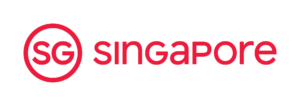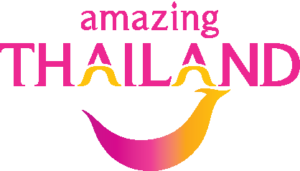
Overview
The United States welcomes foreign citizens who come to the U.S. to study. Before applying for a visa, all student visa applicants are required to be accepted and approved by their school or program. Once accepted, educational institutions will provide each applicant the necessary approval documentation to be submitted when applying for a student visa. Students can apply within 120 days from the start date of I-20 and can travel within 30 days from the start date of I-20.
Visa Descriptions and Qualifications
F-1 Visa
This is the most common type of student visa. If you wish to engage in academic studies in the United States at an approved school, such as an accredited U.S. college or university, private secondary school, or approved English language program then you need an F-1 visa. You will also need an F-1 visa if your course of study is more than 18 hours a week.
M-1 Visa
If you plan engage in non-academic or vocational study or training at a U.S. institution then you need an M-1 visa.
More information about each of these visas and opportunities for studying in the United States can be found at the Education USA website.
U.S. Public Schools
U.S. Public School
U.S. law does not permit foreign students to attend public elementary school (kindergarten to 8th grade) or a publicly funded adult education program. Hence, F-1 visas cannot be issued for study at such schools.
An F-1 visa can be issued for attendance at a public secondary school (grades 9 to 12), but the student is limited to a maximum of 12 months at the school. The school must also indicate on the Form I-20 that the student has paid the unsubsidized cost of the education and the amount submitted by the student for that purpose.
For more information about F-1 legal requirements, visit the Department of State website.
Note: Holders of A, E, F-2, G, H-4, J-2, L-2, M-2 or other derivative nonimmigrant visas may enroll in public elementary and secondary schools.
EducationUSA – Finding a U.S. Higher Education Institution
EducationUSA is the Department of State’s official advising network providing accurate, comprehensive, and current information on higher education. In India, three EducationUSA partners administer seven centers in Ahmedabad, Bangalore, Chennai, Delhi, Hyderabad, Kolkata and Mumbai employing more than 30 student advisors. We encourage all students considering higher education in the United States to check out EducationUSA online followed by engagement with one of the centers. Bhutanese students are welcome to connect with either Delhi or Kolkata.
Application Items
To apply for an F or M visa, you must pay your $160 application fee and submit the following:
A Nonimmigrant Visa Electronic Application (DS-160) Form. Visit the DS-160 web page for more information about the DS-160.
A passport valid for travel to the United States with a validity date at least six months beyond your intended period of stay in the United States (unless country-specific agreements provide exemptions). If more than one person is included in your passport, each person desiring a visa must submit an application.
One (1) 2 x 2 inches (51 x 51 mm) photograph taken within the last six months. This web page has information about the required photo format.
If a visa is issued, there may be an additional visa issuance reciprocity fee, depending on your nationality. The Department of State’s website can help you find out if you must pay a visa issuance reciprocity fee and what the fee amount is.
An approved original signed Form I-20 from your U.S. school or program.
In addition to these items, you must present an interview appointment letter confirming that you booked an appointment through this service. You may also bring whatever supporting documents you believe support the information provided to the consular officer.
How to Apply
Step 1
For Nonimmigrant Visa applicants:Determine your visa type by reading Common Nonimmigrant Visas. Each visa type explains the qualifications and application items. Choose the visa type that applies to your situation.
Be sure to also review the Visa Waiver Program. If your country participates in the Visa Waiver Program, you do not need to apply for a visa if you are travelling for business or pleasure and will only be staying in the Unites States for 90 days or less.
Note: If you are under 14 or over 79 years old, or if you previously received a U.S. visa that expired within the last 12 months and you are returning to the United States for the same purpose of travel, you may be able to obtain a visa without coming to the consulate for an interview. Click here to learn more
Step 2
The next step is to complete the Nonimmigrant Visa Electronic Application (DS-160) form.Be sure to read the Guidelines for Completing the DS-160 Form carefully. All information must be correct and accurate. Once the form is submitted, you cannot make any changes. If you need assistance, please consult an immigration lawyer or translator. The call center cannot help you complete your DS-160. You will need your DS-160 number to book your appointment.
Note: If denied visa previously please complete a new Nonimmigrant Visa Electronic Application (DS-160) form.
Step 3
Once you have determined the correct visa type and completed the DS-160, you must pay the visa fee. The visa fee page lists the visa types and correlating visa fee in US dollars and native currency.
To pay your visa fee, read the Bank and Payment Options page. This page explains how to make your visa fee payment. You will create a profile and must keep your receipt number to book your visa appointment
Step 4
You are almost ready to schedule your visa appointment! Now you will need to login to your profile with the same credentials you used to pay your visa fee. Once you are in the system, you will see your dashboard.Click on Schedule Appointment on the left-hand side menu. This will start the process for scheduling your appointment.
You must schedule two appointments, one for the Visa Application Center (VAC) and one for the visa interview at the Embassy or Consulate.
First, schedule your appointment at a Visa Application Center. This appointment will allow you to go to one of the five Visa Application Center locations to have your fingerprints and photo taken. This appointment must be at least 1 day before your visa interview appointment at the Embassy or Consulate.
Second, schedule your visa interview appointment at the Embassy or Consulate.You will need three pieces of information in order to schedule your appointment:
Your passport number
The date you paid your fee
The ten (10) digit barcode number from your DS-160 confirmation page
As you go through the process you will be able to select your visa type, enter personal data, add dependents, select your document delivery location, confirm visa payment, and schedule your appointment.
Step 5
For your Visa Application Centre appointment, you will need to bring:
A passport valid for travel to the United States with validity dates at least six months beyond your intended period of stay in the United States (unless country-specific agreements provide exemptions). If more than one person is included in your passport, each person desiring a visa must submit an application.
Your DS-160 confirmation page.
Your appointment confirmation page.
One photograph as per U.S. visa specifications if the applicant is under 14 years of age. See the Photos and Fingerprints page for more details.
Step 6
Following your visit to the Visa Application Centre to have your photo and fingerprints taken,you will then visit the U.S. Embassy or Consulate on the date and time of your visa interview. You must bring :
A printed copy of your appointment letter,
Your DS-160 confirmation page
Your current and all old passports
Supporting Documents as per your visa type
Applications without all of these items will not be accepted.
Note: Children under 14 years of age are not required to attend the appointment at the Visa Application Centre or visa interview at the Embassy/Consulate. Accompany/Guardians/Parents can carry the above documents.
Supporting Documents
In addition to these items, you must present an interview appointment letter confirming that you booked an appointment through this service. You may also bring whatever supporting documents you believe support the information provided to the consular officer.
Caution: Do not present false documents. Fraud or misrepresentation can result in permanent visa ineligibility.
You should bring the following documents to your interview:
Documents demonstrating strong financial, social, and family ties to your home country that will compel you to return to your country after your program of study in the United States ends.
Financial and any other documents you believe will support your application and which give credible evidence that you have enough readily-available funds to meet all expenses for the first year of study and that you have access to funds sufficient to cover all expenses while you remain in the United States. M-1 applicants must demonstrate the ability to pay all tuition and living costs for the entire period of their intended stay.
Photocopies of bank statements will not be accepted unless you can also show original copies of bank statements or original bank books.
If you are financially sponsored by another person, bring proof of your relationship to the sponsor (such as your birth certificate), the sponsor’s most recent original tax forms and the sponsor’s bankbooks and/or fixed deposit certificates.
Academic documents that show scholastic preparation. Useful documents include school transcripts (original copies are preferred) with grades, public examination certificates (A-levels, etc.), standardized test scores (SAT, TOEFL, etc.), and diplomas.
Supporting Documents for Dependents
Applicants with dependents must also provide:
Proof of the student’s relationship to his or her spouse and/or child (e.g., marriage and birth certificates)
It is preferred that families apply for their visas at the same time, but if the spouse and/or child must apply separately at a later time, they should bring a copy of the student visa holder’s passport and visa, along with all other required documents.
Other Information
Optional Practical Training (OPT)
F-1 visa holders may be eligible for up to 12 months of optional practical training following completion of all course requirements for graduation (not including thesis or equivalent), or after completion of all requirements. OPT is separate from a student’s academic work, and time for OPT will not normally be reflected during the student’s academic program or in the completed study date. Students applying for an F visa to do OPT may present an I-20 with an original end of study date that may have passed. However, these I-20s must be annotated by the designated school official to reflect approval of an OPT program that extends beyond the end of the regular period of study. In addition, the student must have proof that USCIS has approved their practical training program or that an application is pending, either in the form of an approved Employment Authorization Card or a Form I-797 indicating that s/he has a pending application for an OPT program.
Validity of Student Visas After a Break in Studies
Students who are away from classes for more than five months can expect to apply for and receive a new F-1 or M-1 student visa to return to school following travel abroad, as explained below.
Students within the U.S.
A student (F-1 or M-1) may lose that status if they do not resume studies within five months of the date of transferring schools or programs, under immigration law. If a student loses status, unless USCIS reinstates the student’s status, the student’s F or M visa would also be invalid for future travel returning to the U.S. For more information see the USCIS website, and instructions for Application for Extend/Change of Nonimmigrant Status Form I-539 to request reinstatement of status.
Students – Returning to the U.S. from Travel Abroad
Students who leave the U.S. for a break in studies of five months or more may lose their F-1 or M-1 status unless their activities overseas are related to their course of study. In advance of travel, students may want to check with their designated school official, if there is a question about whether their activity is related to their course of study.
When the Customs and Border Protection (CBP) immigration inspector at port of entry is presented a previously used, unexpired F-1 or M-1 visa by a returning student who has been outside the U.S. and out of student status for more than five months, a CBP immigration inspector may find the student inadmissible for not possessing a valid nonimmigrant visa. CBP may also cancel the visa after granting the student permission to withdraw the application for admission. Therefore, it is prudent for students to apply for new visas at an Embassy or Consulate abroad prior to traveling to the U.S. to return to their studies, after an absence of more than five months that is not related to their course of study.





